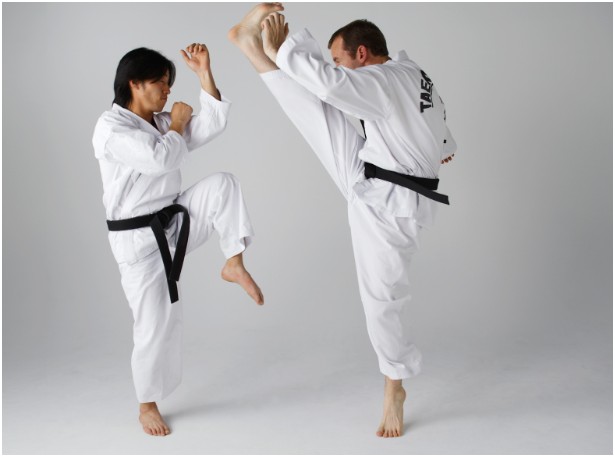Taekwondo, a dynamic and powerful martial art, is known for its incredible array of kicking techniques. These kicks not only showcase agility, speed, and strength but are also vital for self-defense, sparring, and improving overall physical fitness. If you’re new to Taekwondo or looking to sharpen your kicking techniques, you’ve come to the right place.
In this guide, I’ll walk you through all the basic Taekwondo kicks moves that every practitioner should know. Whether you’re a beginner or an advanced martial artist, understanding these kicks is essential for progressing in Taekwondo. Let’s get started with the fundamentals!
Why Are Kicks So Important in Taekwondo?
In Taekwondo, kicks play a pivotal role in both offense and defense. They are not only used to strike an opponent but also help maintain balance and control distance in sparring. Mastering the basic Taekwondo kicks is the first step towards becoming proficient in this martial art.
All Basic Taekwondo Kicks Moves You Must Know
1. Front Kick (Ap Chagi)
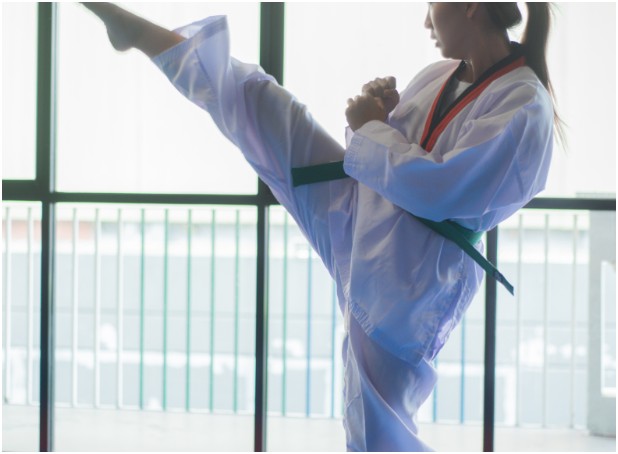
Description: A quick, linear kick aimed at the opponent’s midsection or face.
Execution: Lift your knee to waist height, then extend your foot forward, striking with the ball of your foot.
Tip: Focus on speed and recoil to make it difficult for opponents to counter.
2. Roundhouse Kick (Dollyo Chagi)

Description: A versatile kick that can be delivered to various targets, including the head and body.
Execution: Pivot on your supporting foot, rotate your hips, and swing your kicking leg in a circular motion, striking with the instep or ball of your foot.
Tip: Practice hip rotation to increase speed and power.
3. Side Kick (Yop Chagi)
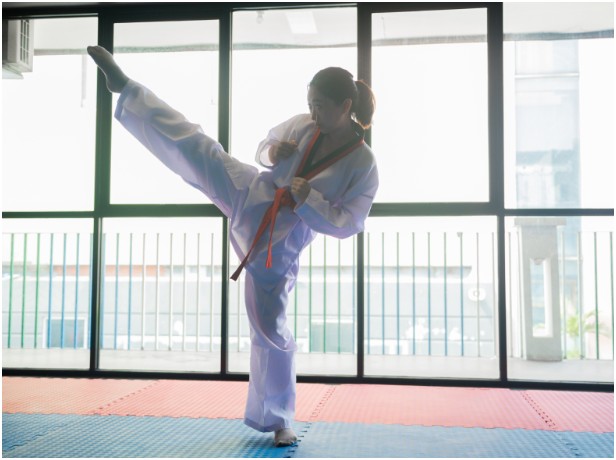
Description: A powerful lateral kick targeting the opponent’s torso or head.
Execution: Pivot your supporting foot, rotate your body 90 degrees, and extend your leg sideways, striking with the edge of your foot or heel.
Tip: Engage your core for added power and stability.
4. Back Kick (Dwi Chagi)
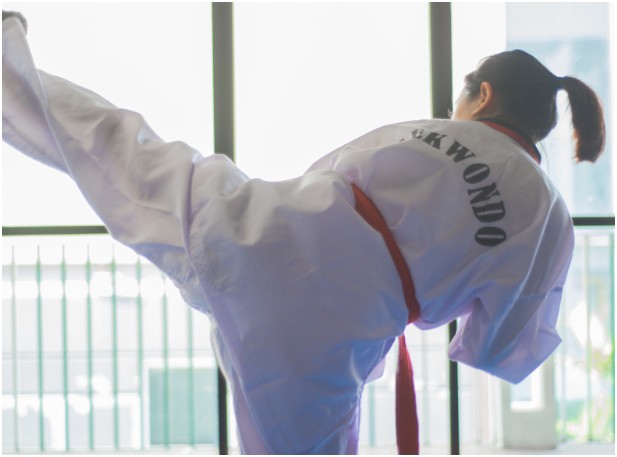
Description: A strong kick delivered to an opponent approaching from behind.
Execution: Turn your body away from the target, then thrust your rear leg backward, striking with the heel.
Tip: Keep your head up and eyes on the target to maintain balance.
5. Ax Kick (Chukyo Chagi)
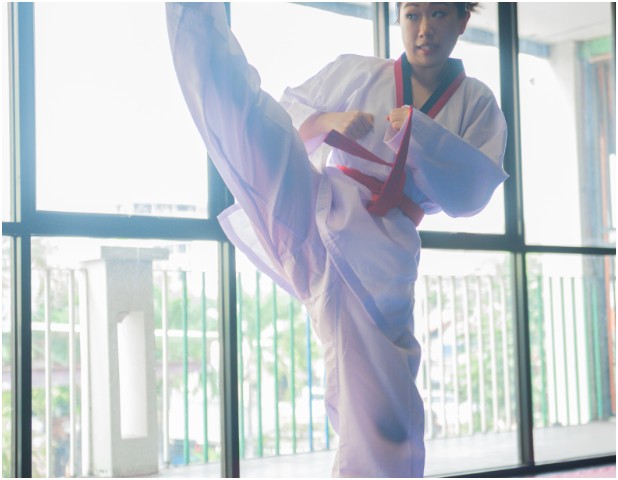
Description: A downward striking kick resembling an axe’s motion.
Execution: Raise your leg high as if performing a front kick, then bring it down in a sharp, axe-like motion, striking with the heel.
Tip: Keep your foot straight and your leg extended high before bringing it down for maximum impact.
6. Reverse Side Kick (Bandae Yeop Chagi)
Description: A variation of the side kick with a deeper body rotation.
Execution: Rotate your body further than in a standard side kick, extending your leg sideways and striking with the edge or heel of your foot.
Tip: Ensure your kicking leg is straight and your foot is flexed for maximum impact.
7. Inner Crescent Kick (An Chagi)
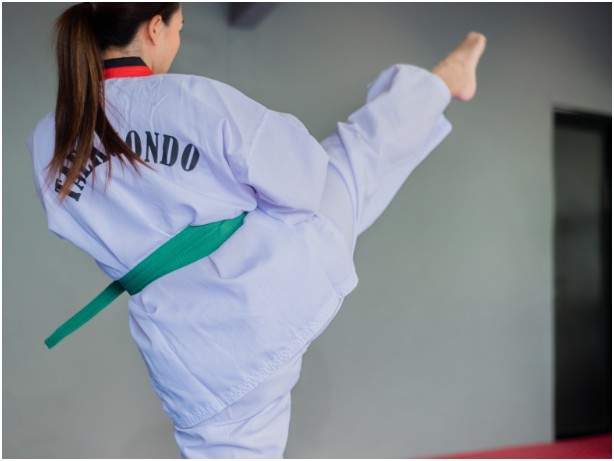
Description: A sweeping kick that arcs inward, often used to deflect attacks.
Execution: Raise your leg and sweep it in an inward arc, striking with the inside edge of your foot.
Tip: Maintain a controlled motion to avoid overextending.
8. Outer Crescent Kick (Bakkat Chagi)
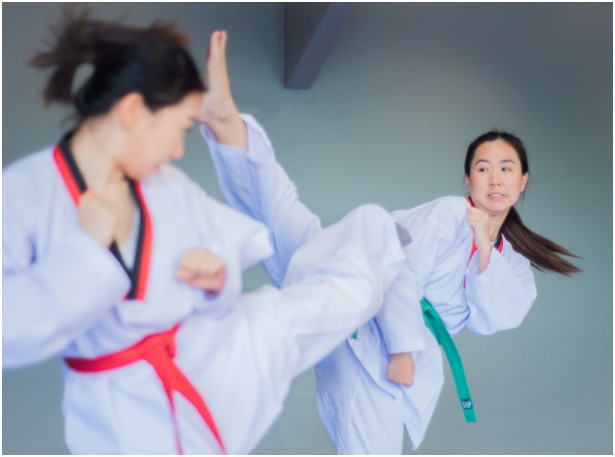
Description: A sweeping kick that arcs outward, useful for blocking or attacking.
Execution: Raise your leg and sweep it in an outward arc, striking with the outside edge of your foot.
Tip: Keep your movements fluid and precise.
9. Hook Kick (Huryeo Chagi)
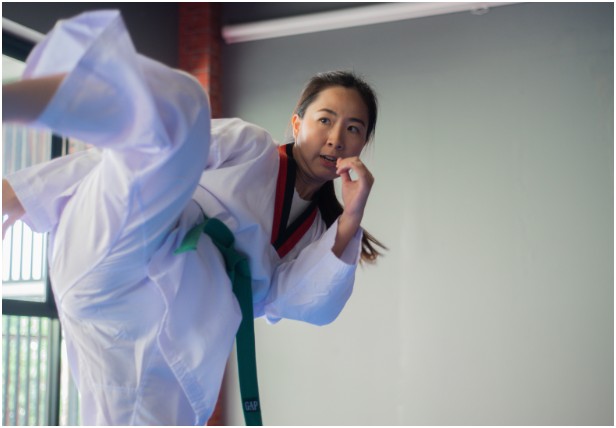
Description: A kick that combines a roundhouse motion with a backward hook.
Execution: Execute a roundhouse kick, then hook your foot backward, striking with the heel.
Tip: Focus on the heel’s impact for maximum effectiveness.
10. Reverse Turning Kick (Bandae Dollyeo Chagi)
Description: A spinning kick that delivers a powerful strike.
Execution: Turn your body 180 degrees, then extend your leg in a circular motion, striking with the heel.
Tip: Practice the spin to maintain balance and control.
11. Knee Strike (Mureup Chigi)

Description: A powerful strike using the knee, often employed in close combat situations.
Execution: Raise your knee and thrust it forward into the target.
Tip: Engage your core and maintain balance to deliver a strong strike.
12. Scissor Kick (Kawi Chagi)
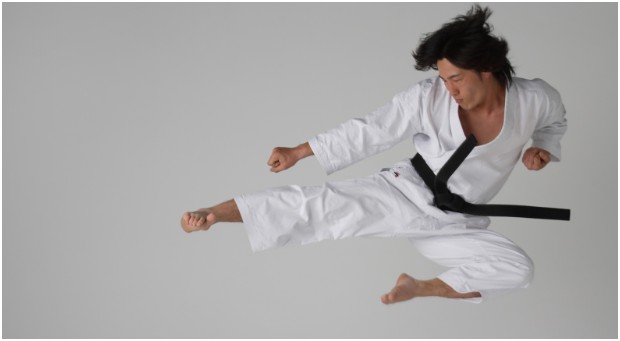
Description: A jumping kick targeting two opponents simultaneously.
Execution: Jump and use each leg to target a separate opponent.
Tip: Ensure precise timing and control during the jump.
13. Flying Side Kick (Twi Myo Yeop Chagi)

Description: A side kick executed while jumping, adding height and surprise.
Execution: Jump sideways and execute a side kick mid-air, striking with the edge or heel of your foot.
Tip: Engage your core and maintain balance during the jump.
14. Flying Back Kick (Twi Myo Dwi Chagi)
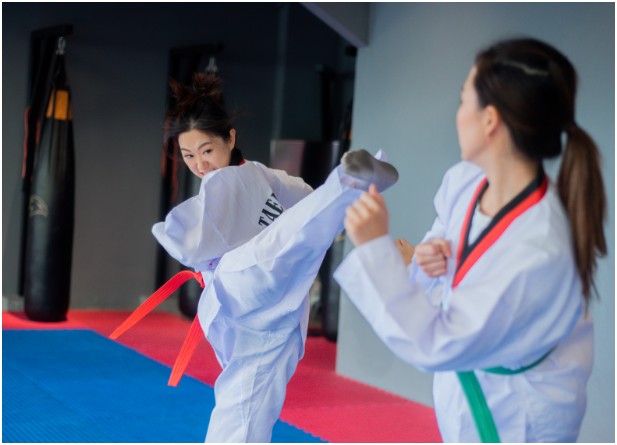
Description: A back kick performed while jumping, increasing reach and power.
Execution: Jump and rotate your body, executing a back kick mid-air, striking with the heel.
Tip: Practice jumping and kicking separately before combining them for better control.
Also Read: Taekwondo Belt Order
Training Tips for Mastering Taekwondo Kicks
Mastering kicks in Taekwondo takes time and practice, but with consistency, you’ll improve your technique.
- Flexibility: Stretch regularly to improve your flexibility, especially your hamstrings and hip flexors, which are crucial for high kicks.
- Footwork: Always maintain good footwork while executing kicks. This will help you stay balanced and improve your movement efficiency.
- Practice on Pads: Use pads and bags to develop your power and control. Kicking against resistance is crucial for building strength.
Common Mistakes to Avoid
As you learn these basic Taekwondo kicks, keep an eye out for these common mistakes:
- Incorrect Pivoting: Failing to pivot properly during kicks like the roundhouse can cause imbalance and weak strikes.
- Weak Kicks: Not fully extending your leg or striking with the wrong part of your foot can reduce the effectiveness of your kicks.
- Lack of Focus: Kicks require focus and precision. Avoid rushing through the motions without proper technique.
Conclusion: Mastering the Basics
To become a skilled Taekwondo practitioner, it’s essential to first master all basic Taekwondo kicks moves. These fundamental techniques serve as the building blocks for more advanced moves and strategies. Whether you’re looking to improve your sparring performance or develop your self-defense skills, mastering these basic kicks will set you on the path to success.
Stay consistent in your practice, and don’t be afraid to make mistakes along the way. Every kick, every step is part of your journey to becoming a Taekwondo expert. Keep pushing yourself, and before you know it, you’ll have these moves mastered!





